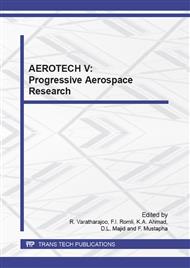p.467
p.475
p.481
p.487
p.493
p.498
p.503
p.507
p.513
Aerodynamic Analysis of the Preliminary Design of SURIAKAR 4 Using CFD
Abstract:
A four-wheel solar car, the SURIAKAR 4, was designed based on the revised regulations of the Challenger Class World Solar Challenge (2013). It is a four-wheel car with the front and back wheels enclosed in a wind cheating cover. The cockpit is located in such a way that it sits between the front and rear wheel, within the wheel cover on the right side of the car. This paper investigates the aerodynamic characteristics of the car, especially the drag and lift forces, and other forces and moments that determine the stability of the car using CFD package ANSYS Fluent. The model analysis was done with 2.23 million elements after a thorough grid independence study was conducted. The drag coefficient of SURIAKAR 4 is 0.1817. With a frontal area of 0.8934 m2 and at the design speed, the car requires 2132 W of power to overcome this aerodynamic drag. The results also showed that the airflow quality around the car is relatively well-behaved, with only a few turbulent flow points identified. This flow incurs drag penalty and thus have to be modified.
Info:
Periodical:
Pages:
507-512
Citation:
Online since:
October 2014
Price:
Сopyright:
© 2014 Trans Tech Publications Ltd. All Rights Reserved
Share:
Citation:


